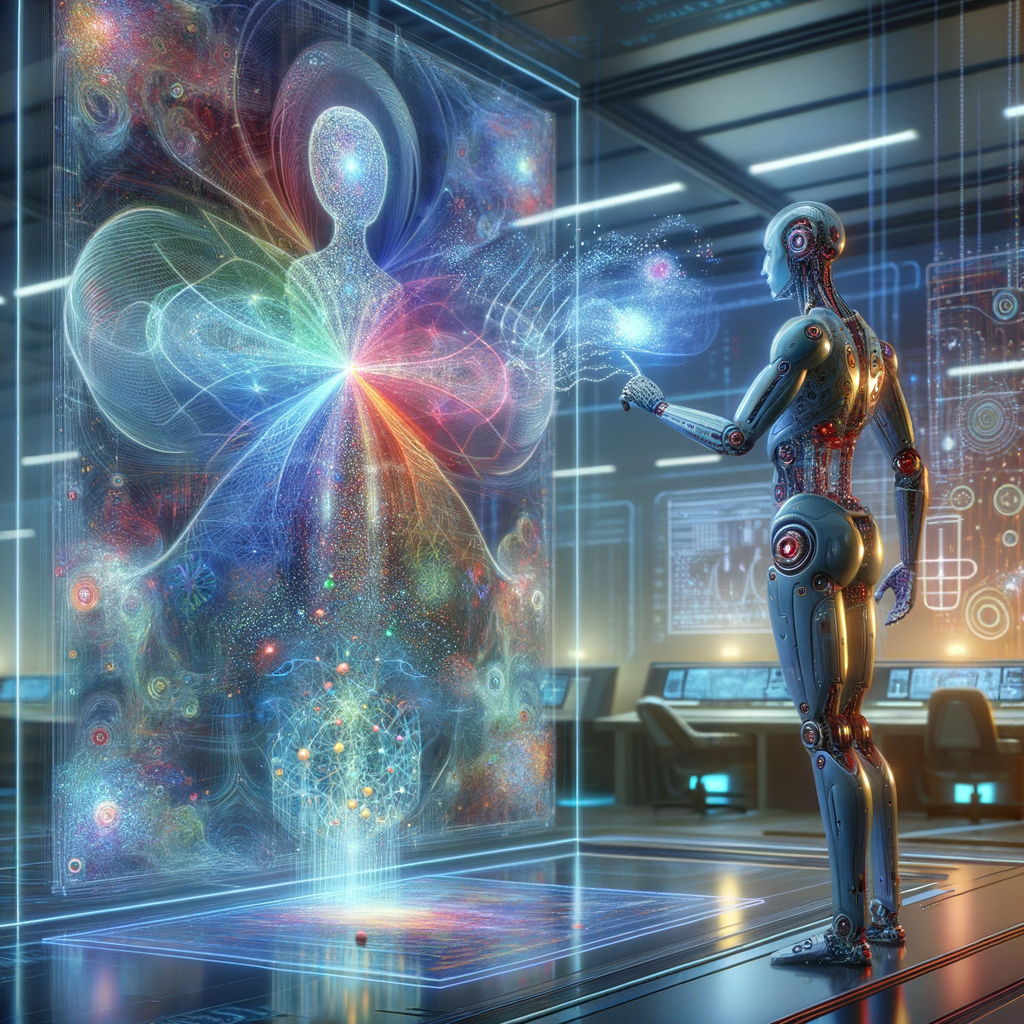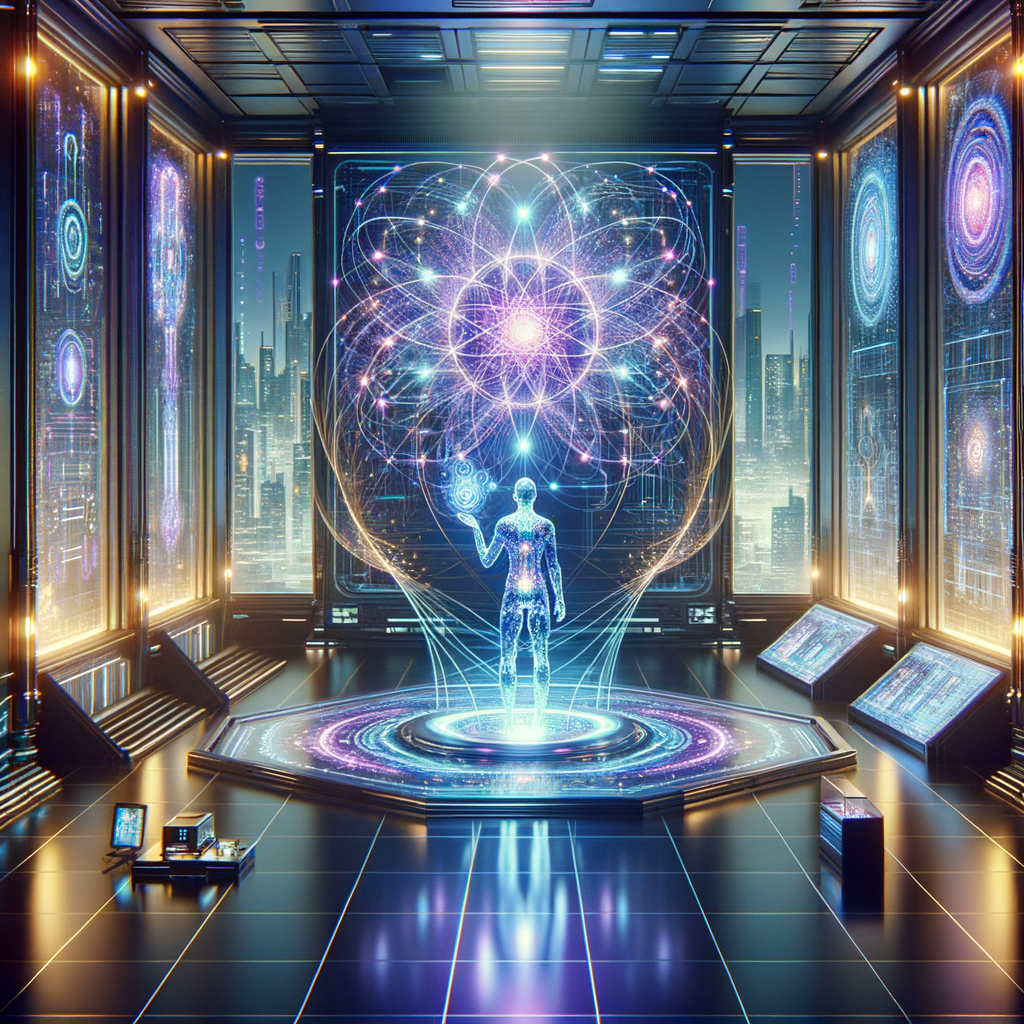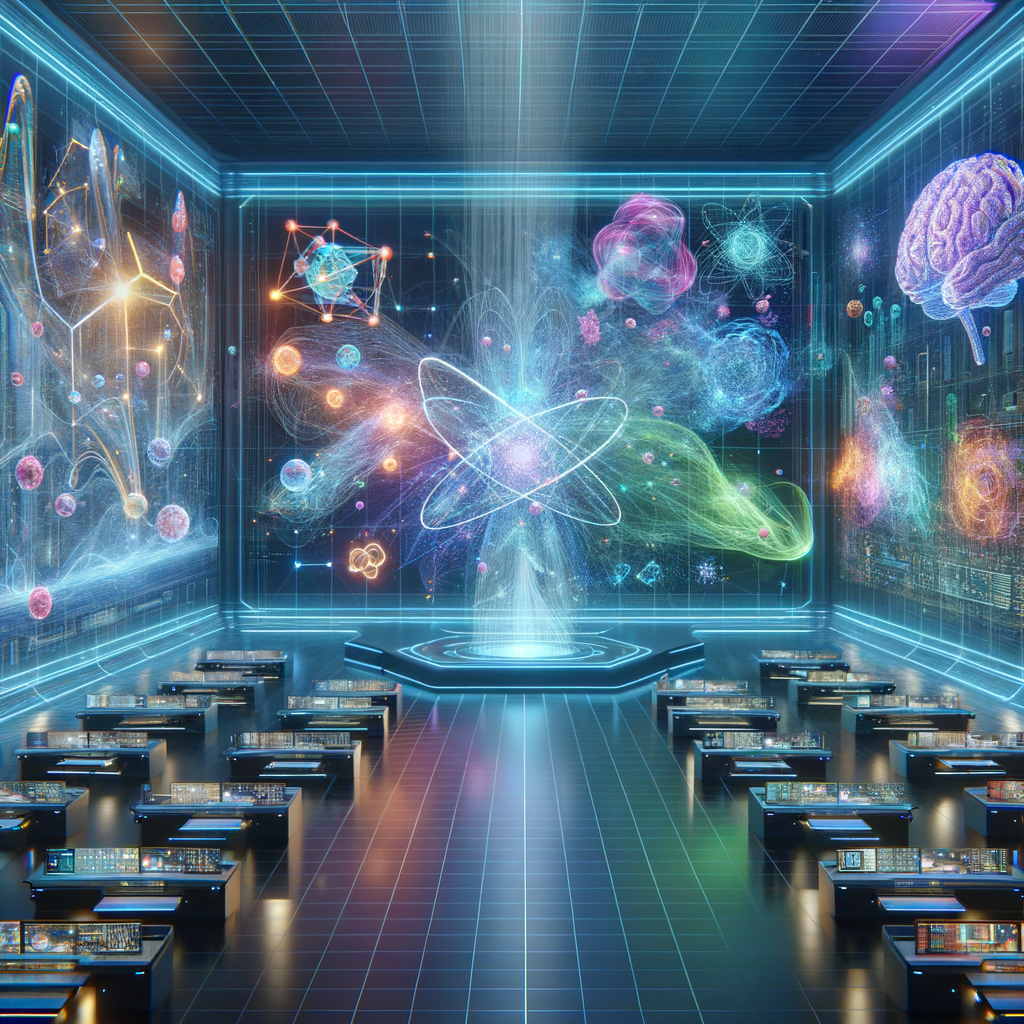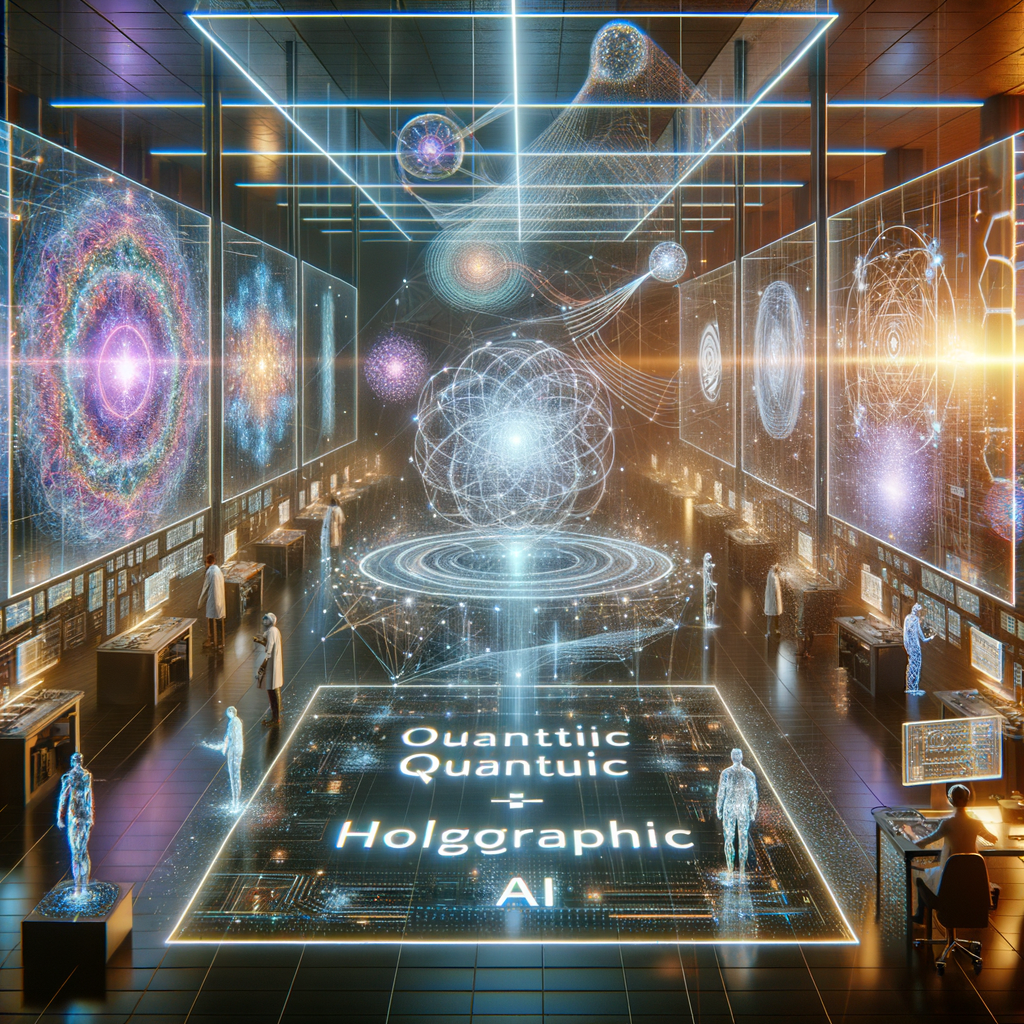 © 2023 / 2024 - QHIQ
© 2023 / 2024 - QHIQIntroduction to Quantic Holographic AI
Quantic Holographic Artificial Intelligence (QHAI) represents an amalgamation of the principles of quantum computing and holography with the evolving field of artificial intelligence (AI). Quantum computing leverages quantum mechanics to handle complex computations at unprecedented speeds, making it instrumental in advancing AI. Adding the dimension of holography allows 3D reconstruction of data, providing a multi-dimensional perspective.
Key Concepts in QHAI
The foundational concepts governing QHAI include quantum superposition and holography. Quantum superposition aids in machine learning by allowing quantum bits (qubits) to exist in multiple states simultaneously, hence increasing computational capacity exponentially. Holography, on the other hand, enables 3D representation of data, improving AI's pattern recognition and data interpretation abilities. The combination of these technologies opens up exciting prospects for QHAI.
Recent Advancements in QHAI
Recent advancements in QHAI have been highly promising. Quantum Machine Learning (QML) now seeks to leverage quantum algorithms that outperform classical counterparts. The innovative application of holographic technology has seen the development of Holographic Reduced Representations allowing higher efficiency in data categorization and evoking imagery in AI responses.
Challenges and Future Prospects
Despite these advancements, challenges linger. Quantum computing is in early development and requires immense resource input, while standardizing holography in AI has its technical hurdles. As a start-up, other challenges like funding, hiring suitable talents, and keeping pace with rapid advancements can be daunting. However, the future holds immense potential in personalized AI assistants, advanced data analysis, and comprehensive wearable technology to name a few.
Sample Code (Python)
An example of a quantum circuit that can be used in quantum computing. While the concept is abstract, this should provide some insight.
from qiskit import QuantumCircuit, transpile
from qiskit.providers.aer import QasmSimulator
circuit = QuantumCircuit(2, 2)
circuit.h(0)
circuit.cx(0, 1)
circuit.measure([0,1], [0,1])
simulator = QasmSimulator()
compiled_circuit = transpile(circuit, simulator)
job = simulator.run(compiled_circuit, shots=1000)
result = job.result()
counts = result.get_counts(circuit)
print(counts)


























































